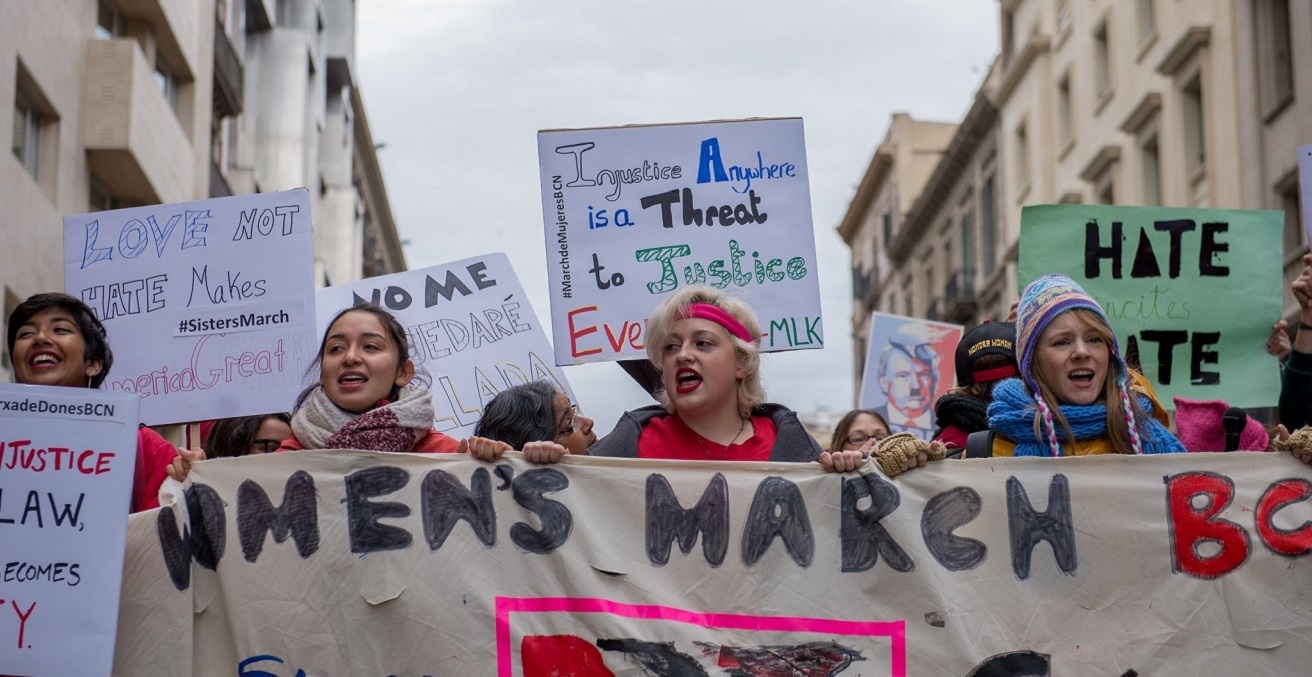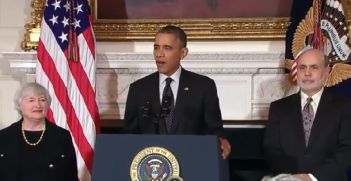The Woman Paradox: Misogyny and Women In the Far-Right

With the threat of right-wing extremism accelerating due to the pandemic, understanding the gendered element of the threat is essential countering radicalisation. Misogynist rhetoric is not only pushing men to the far right, but women too.
Much has been written about the way women are spoken about in extremist movements—most notably within Islamic, far-right, and white nationalist groups. For most paying attention, the extreme misogynist views and anti-feminist language used by these groups come as no surprise. But how women, and by extension, the broader role in the society these groups envision for women, are spoken about encompasses more than the sexist terms attributed in the media. And far from discouraging women, these groups are actually drawing women in record numbers.
Understanding the issue has reached critical importance, predominantly due to the speed at which the threat from right-wing groups is growing. Interpol noted that between 2018 and 2020, the number of cases involving right-wing extremism grew 320 percent in Western countries. In the United States alone, far-right groups were responsible for 67 percent of terrorist plots in 2020. In Australia, too, the issue has come to the fore with horrific attacks on two mosques in Christchurch carried out by an Australian citizen in March 2019 and an Australian teenager in the regional town of Albury being arrested and charged with domestic terrorism.
The Anti-Feminism Is Rife
In the 200-page manifesto he published shortly before he carried out his attack in Christchurch, Brenton Tarrant noted his admiration for Norwegian right-wing terrorist Anders Breivik. In Breivik’s mammoth manifesto, he notes how Europe is becoming increasingly feminised, that politically correct culture is hellbent on turning society into a matriarchy, and that feminism, if left unencumbered, may result in the death of the European society as we know it.
Female politicians, both in Australia and Europe, have spoken about being the targets of vile, sexist threats from right-wing groups and their adherents. Politicians such as Katharina Schulze in Germany and Sibeth Ndiaye in France have been targets of coordinated attacks, centring predominantly, but not exclusively, on their gender, and they are disproportionally singled out when compared to their male party colleagues who hold the same political views. Psychological violence such as this deters intelligent women from entering public service, it restricts and disrupts crucial conversations, and it interrupts political work. When democratically elected members are being threatened on the basis of their gender, not only online, but in person too, it has clear dire implications for the health of democracy.
While anti-feminist and misogynistic language alone do not make for a far-right radical, men who are disenfranchised, either with women, the world, or both, may be more vulnerable to radicalisation by far-right groups, especially online. Certain fringe movements, such as men’s rights groups, incels (involuntary celibate), or Pick Up Artists (PUA), will offer acceptance and community to men who feel “social isolation and erotic frustration.” These groups often operate on the same online platforms as radical-right groups, who also rail against feminism and “gender politics.” In this sense, misogynist views may act as a “gateway” to more radical and violent views.
To Denigrate or to Protect?
Yet these same movements often place the desire to protect women, particularly from the “evils of Islam,” at the forefront of their narrative. People drawn to right-wing radicalism will often describe how they were motivated by videos of Muslims attacking women, and will deliberately skew the narrative around the real concerns women have for their own safety, to act as the “protectors” of women against Muslim men. When women were harassed en masse in Germany on New Years Eve 2015 by men predominantly from Middle East and North African backgrounds, it sparked a vile public discourse about the character of refugees. In response, right-wing extremist groups saw a surge in membership as they used the incident as proof that large numbers of Muslim refugees threaten the safety of women in public. But much too often, this “concern” is merely a thinly veiled attempt by far-right groups and parties, such as the Alternative für Deutschland (AfD), to co-opt the horrific experiences of women to further their political agenda against immigration.
The anti-feminist and paternal discourse is not only serving to radicalise men, but increasingly also to draw women into these movements. The vast majority of people who join right-wing extremist groups are men, and they have been for decades–but it’s important to recognise that women have played key roles in far right historically, although often unacknowledged. Recently, parties such as Poland’s Law and Justice Party have established policies catered toward welfare schemes aimed to increase the birth rates of the native women. Women are increasingly active in right-wing-adjacent conspiracy theory groups such as Qanon, Women who similarly reject feminism and are drawn to more traditional roles for women, such as the self-described TradWives (Traditional Wives), a movement based on subservient and traditional roles for women and an aim of increasing birth rates for white families. Again, while not all women who embrace traditional roles are extremist, women who feel rejected from modern feminist movements may be drawn into racist hate groups that “celebrate” their traditional views.
Toward a Better Understanding of the Discourse Landscape
Researchers have increasingly drawn attention to the need to examine the growing threat of right-wing extremism through a gendered lens. It also needs to be an investigation of what came first – are “anti-feminists” likely to be drawn to right wing movements, or anti-feminist ideas fostered once group members join for unrelated reasons, such as economic disenfranchisement, anti-Muslim sentiment, or simply the desire to belong to a group. Whatever the reason, once men are in a far-right group, the ideas of violent extremism and misogyny become mutually reinforcing.
This is especially pertinent, as overlooking the gendered element may have implications for national security and the stability of democracy. Studies have found that anti-women attitudes are the biggest predictors of attitudes of violent extremism, and this is true for far-right groups as well. Research from Swinburne University has shown that far-right sentiments were most often coupled with anti-feminist and anti-women statements, in comparison to anti-left sentiment or racist sentiments.
But Australia is not alone in this. Countries with historical experience in combating right-wing extremism, such as Germany, have also been criticised for overlooking the threat of anti-women sentiment in right-wing extremism. When young boys, only as old as 13 or 14, are being recruited into extremist movements, combatting sexism in schools should not only be seen as a moral exercise, but as part of a national approach to prevent and counter violent extremism. More importantly, understanding why someone’s views on gender may make them more susceptible to radicalisation is a key part of understanding the threat landscape from right-wing groups internationally.
Anet McClintock is currently completing her honours thesis in right-wing extremist movements in Australia and Germany at the University of Melbourne. She is currently an intern with AIIA Victoria, and was previously the Middle East and North Africa Fellow with Young Australians in International Affairs.
This article is published under a Creative Commons License and may be republished with attribution.




